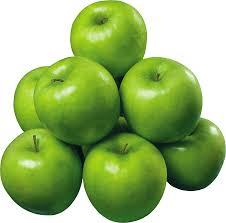A One-Line Comprehension Passage 1
Read the passage carefully and then answer the following questions.
Suddenly feeling the line go
taut, Adrian excitedly hauled it in.

1.
What is the name
of the boy in the story?
2.
To what does the
“it” in the passage refer?
3.
What word in the
passage may mean the same as tight?
4.
What was the boy
holding in his hand?

5.
What do you think
he was doing?
6.
Choose an
appropriate adjective to place before the word “line”.
7.
What do you think
caused the boy to be excited?
8.
What word in the
passage may mean the same as pulled?
9.
What words tell
us that the boy had probably done this activity before?
10.
Why do you think
the line suddenly became taut?

11.
Besides the line
what else do you think the boy might have used in this activity?
12.
What do you think
the boy expected to find when he hauled in the line?
13.
Write a single
sentence to suitably begin the story.
14.
Write a single
sentence to appropriately end this story.

15.
Where do you
think this activity might have taken place?
16.
Suggest a suitable
topic for this passage.
In the spaces following list
the four adverbs in the passage.
17.
(………………………………....)
18.
(…………………………………)
19.
(…………………………………)
20.
(…………………………………)
Stewart Russell © 2016






A One-line Comprehension Passage 2
Read the passage carefully and then
answer the following questions.
Wherever there is a choice of answers
circle the best one.
Hearing the
strange, loud noise, Adrianna dropped the needles and rushed outside to stare in
the air at the amazing spectacle.
1.
What
caused the girl to stop what she was doing?
2. Why do you think she rushed outside?
3.
What
word in the passage could mean the same as sight?
4.
(Look, Glance, Gaze, Glare) best defines the word stare.
5. What
word in the passage tells us that the girl had probably not heard such a noise
before?
6.
What
kind of needles do you think they
might have been?
7.
Where
was this amazing spectacle?
8.
What
is the name of the girl?
9. How
can we tell that she had little time in which to see the amazing spectacle?
10. What
do you think she was doing before she heard the noise?
11. How many needles do you think the girl might have been using?
12.
The
girl appears to be (industrious, lazy, idle, malicious).
13. Near which important place do you think she might have been when she heard the noise?
14. Before
the noise the girl most likely was (standing, lying, sleeping, sitting).
In the spaces following list the
three adjectives in the passage.
15.
(………………………………)
16.
(……………………………….)
17.
(……………………………….)
18.
Suggest
a suitable topic for this passage.
19.
Write
the only adverb in the passage.
20. The
activity the girl was doing was probably a
(chore, game, hobby, duty).
21.
What
do you think the amazing spectacle was?
22.
Complete
the following with one word. Having seen
the spectacle she was (………………………..).
23. What
word makes us believe that the girl was indoors before she heard the noise?
24.
What
word in the passage might mean the same as incredible?
25.
To
where do you think the amazing spectacle was headed?
Stewart Russell © 2016
A Mathematics Comprehension Exercise
Just A Problem Solving Idea

Please note that in the following exercise the focus is not on the answer to the question but the information related to the question. This problem solving exercise is treated as though it were a Comprehension exercise. Hence the children are encouraged to familiarize themselves with the story.
A Mathematics Comprehension Exercise
Just A Problem Solving Idea
Please note that in the following exercise the focus is not on the answer to the question but the information related to the question. This problem solving exercise is treated as though it were a Comprehension exercise. Hence the children are encouraged to familiarize themselves with the story.
Sam bought 8 apples for $4.00.
He gave his sister 3 apples and ate 2.
He had $8.00 left.
They may discuss the following:
· From whom do you think Sam may
have received the money?
· Where do you think he bought the
apples?
· Why do you think he shared with
his sister?
· Could it have been a school
day? Why do you think so?
· What are some other questions we
could ask about this story?
What are the facts in the problem?
A.
Sam
bought 8 apples.
B.
He
paid $4.00 for the apples.
C.
He
gave his sister 3 of the apples.
D.
He
ate 2 of the apples.
E.
He
had $8.00 left.
Here are some questions to think about.
Task:
Write under each
question item the facts that relate to that question.
If none off the
facts relate to a question leave the space blank.
1.
How
much money did Sam have at first?
Facts:
2.
How
much money did he have left?
Facts:
3.
How
many apples did Sam have left?
Facts:
4.
What
would be the cost of 3 apples?
Facts:
5.
How
many apples were spoilt?
Facts:
6.
How
much money did Sam have the day before?
Facts:
Stewart Russell (c) 2016

A Mathematics Comprehension Exercise
Just A Problem Solving Idea
A carpenter earns $35 an hour.
He earns an extra $7 per hour for overtime. He worked for 50 hours 10 of which are
overtime. How much money did the
carpenter work for?
Section A
Simple recall questions could be:
1.
Who
is the worker in the story
2.
What
work does he do?
3.
How
is he being paid?
4.
How
much money does he get for each hour?
5.
How
much money extra does he get for an hour?
The answers to the questions in
Section A will supply us with the facts that we need to answer the next set of
questions.
Section B
Questions that depend upon knowing the facts:
1.
What
do you think is meant by overtime?
2.
How
much money does he get for 2 hours normal time?
3.
How
much money does he get for 4 hours normal time?
4.
How
much money does he get for 40 hours normal time?
5.
How
much money does he get for an hour of overtime?
6.
How
much money does he get for 2 hours overtime?
7.
How
much money does he get for 7 hours overtime?
Section C
Questions requiring information gathered from Section B:
1.
How
much money does he get for 3 hours normal time and 2 hours overtime?
2.
How
many hours normal time must he work if wants to get $72?
3.
How
many overtime hours must he work to get $45?
4.
How
much money should he get if he works 50 hours 10 of which are overtime?
Stewart Russell (c) 2016
No comments:
Post a Comment